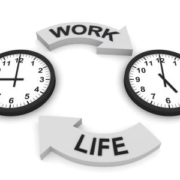OP-Ed: Why Female Leaders Experience More Burnout and What to Do About It
 While COVID took a toll on all of us, women in the workplace are feeling the burnout effects at higher rates than their male counterparts. Data from a 2020 McKinsey poll found that:
While COVID took a toll on all of us, women in the workplace are feeling the burnout effects at higher rates than their male counterparts. Data from a 2020 McKinsey poll found that:
- 53 percent of women reported feeling job-related stress, compared to 46 percent of men
- 37 percent of women felt exhaustion, compared to 31 percent of men
- 32 percent of women felt burnout, compared to 28 percent of men
The disparity is even more obvious at the senior level. For example, 54 percent of senior-level female leaders felt exhausted compared to just 41 percent for men, and 39 percent experienced burnout with only 29 percent of male leaders reporting the same.
To counteract widespread burnout as a female leader, it’s important to understand the root causes of your work-related stress and find actionable ways to avoid it. Here are some strategies you can use as a female leader in the workplace fighting burnout during COVID and otherwise.
Understand the Relationship Between Mental Health and Burnout
Burnout is due to chronic stress, fatigue, cynicism, and lack of accomplishment, according to a study from Frontiers in Psychology. What’s more, the research indicates that burnout often shares commonalities with depression and anxiety.
With stress at the root of burnout, it’s vital that you not only be aware of how stress levels can impact your mental health but your physical health as well. You may not notice the stress if you’re used to it, but you might notice these physical stress indicators:
- Tense muscles
- Blood pressure increase
- Increase in heart rate
- Hyperventilating
- Off-balanced digestion
In “How to Free Yourself From Stress”, HealthMarkets explains that the real trouble starts when this stress becomes chronic. They explain, “The constant physiological response wears us down, affecting several major biological systems. Our stores of energy drain. Our bodies produce fewer infection-fighting T-cells, so our immune systems become weak, making it easy for illnesses and diseases to push their way into our lives.”
Fight burnout: Use an app like Symple to track your daily mental and physical health. It’s easy to ignore stress when it’s become the norm for you. This small step will force you to focus on your overall health each day, which can point you to burnout before it becomes a problem.
Fight Back Against Social Media Fatigue
Female leaders are expected to write sharp industry articles on LinkedIn and promote themselves as the face of a brand on Twitter. Not to mention, it’s often a component of our personal lives. Yet, excess social media consumption can also lead to burnout.
The problem is that too much social media exposure is dangerous to mental health, especially for female leaders. Recent research has found that social media fatigue is a legitimate condition that can lead to anxiety and exhaustion.
As a modern successful woman, you’re constantly taking in the highlight reel of your peers and colleagues. To make it even worse, instances of “mom-shaming” for working mothers are on the rise since the start of COVID-19.
Fight burnout: How often do you mindless scroll on social media? Probably more than you think. Set social media boundaries so you can still show up where you need to, but walk away when you don’t. For example, you set a rule that you can’t look at social media until 10 am and then you put it away for the night after dinner. If you can’t stop yourself, let your phone do the work with an app like Offtime.
Untangle the Excessive Demands on Female Leaders
Based on the same McKinsey data, COVID-19 workplace shifts caused unequal challenges for female leaders, especially when compared to men. The pressures of household responsibilities, fear of suffering job performance, and lack of flexibility/work-life balance forced many women to scale down their careers or leave their job. One in three working mothers faced this decision due to limited childcare options.
It’s even tougher is when you’re the solitary female in your position. The report explains, “Senior-level women are also nearly twice as likely as women overall to be ‘Onlys’—the only or one of the only women in the room at work.” This circumstance sets the stage for microaggressions, criticisms, dismissals, and high-performance stakes, all of which contribute to female leaders experiencing burnout 1.5 times more than male leaders.
If you add childcare into the equation (working mothers currently spend 15 more hours on domestic labor per week than men), it becomes an impossible situation.
This is when it becomes important for organizations to play a role in helping women mitigate their burnout.
How Organizations Can Help Female Leaders Combat Burnout
You’re likely not the only woman dealing with this burnout in your organization—and in some cases, it takes the organization to make changes for you to be able to better manage the stresses put on women in the workplace.
Consider using these strategies to recognize and counteract burnout for women company-wide:
- Promote mental health awareness: Ensure transparency surrounding mental health benefits, I.E. therapy and other available resources. If your benefits plan is lacking, Eric Freedman, founder and CEO of eSkill, suggests circumventing financial barriers by exploring options such as telehealth counseling sessions or access to mobile wellness subscriptions. Companies can also provide mental health support with group meditation classes. Organizations including Nike, Google, and Sony have built this into their company culture.
- Support working mothers: Assist working mothers in finding solutions for childcare or allow for more flexible hours for those who also home-school their children due to COVID. Don’t just to send an email or memo, but make changes that help women make these changes in their workday. What’s more, female leaders can lead by example by setting boundaries, like being offline at certain times, so their direct reports know that it’s acceptable to do the same. Check out this Fast Company piece, which highlights how other companies provide for the “patchwork of childcare needs” of their employees.
- Get real: It’s important that company leaders don’t just talk about these things, but they take real action. This will look different for each organization, starting with getting serious about allowing for greater flexible schedules, getting realistic about workloads and where support is needed, updating paid leave policies, and even discussing whether female leaders’ pay is equivalent to the work they’re doing.
Female Leaders: Support Yourself and Others
Whether you manage women in leadership positions, shape your HR policies or workplace culture, or are a female executive, you’re likely experiencing burnout in some way. The first step to solving this issue is understanding where the root causes are and then taking real action to provide solutions. It’s time to put sustainable policies and processes into place so female leaders can do their job without an impossible burden on their shoulders.
Jessica Thiefels is the author of 10 Questions That Answer Life’s Biggest Questions, podcast host of Mindset Reset Radio, CEO of Jessica Thiefels Consulting and founder of the Femxcutive Personal Brand Coaching Program. She’s been writing for more than 10 years and has been featured in top publications including Forbes and Entrepreneur. She also contributes to Fast Company, The Ladders, and more. Follow her on Instagram, Twitter and LinkedIn.









